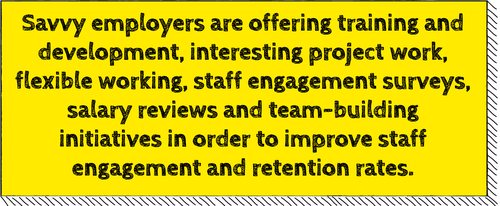The New Zealand employment market has flipped on its head in recent months, with widespread candidate shortages and a huge demand for skilled people making recruiting in 2021 a major challenge. Both business leaders and recruitment professionals are affected as much as any other part of the workforce as they struggle to recruit and retain talented Technology & Digital employees in an increasingly competitive landscape.
So, what can we do to combat the candidate shortage and win the war for talent?
Candidate is King
As we continue to navigate a rapidly evolving business landscape, organisations will need the best people on board to help them rebuild and seize any opportunity that may arise in the future. However, we are currently facing a severe talent shortage, with skilled people becoming harder to secure and hold onto.
New Zealand has fared well economically and demand for talent is at an all-time high, but in many sectors, particularly IT, the supply of talent is at an all-time low due to the borders being shut with no opening date in sight. Skilled individuals are being actively pursued by multiple organisations and presented with new opportunities weekly, as well as receiving counter offers with their current companies as they try to hold onto good staff.
The issue is exacerbated further by the uncertainty caused by sudden lockdowns which has made some people

hesitant to change jobs, preferring the security of remaining in their current roles. Additionally, many candidates are well aware of the scarcity of talent, driving them to seek notably larger salary increases, more flexibility and greater responsibility when they do decide to look for new opportunities.
If there’s one thing that’s clear, it is that in this market, the candidate is king – and recruitment and retention efforts must adapt accordingly.
The Battle to Retain Talent
Loyalty is fickle in the battle to retain talent, so identifying strategies to hold onto your best people is essential. We are seeing clients approach this in a variety of ways. With the seismic shift that COVID-19 triggered in 2020, organisations are adopting new ways of working, whether it is embracing hybrid models or

boldly reimagining the office environment to create a greater sense of belonging and comfort for employees. Savvy employers are offering training and development, interesting project work, flexible working, staff engagement surveys, salary reviews and team-building initiatives in order to improve staff engagement and retention rates.
Many government, tertiary and health organisations that can’t match the rising salaries or offer other costly benefits are trying to compete by offering a culture and flexible working options that most private organisations cannot match. They are providing work/life balance to the extreme, allowing employees to start earlier or later while working from home on any given day to make room for their personal lives outside of work. Consequently, their employees are so grateful and comfortable that many don’t want to entertain other roles with less autonomy.
However employers choose to tackle retention, the key is to respond to employees’ changing expectations to ensure the work environment continues to keep them satisfied in their role and less likely to explore other opportunities.
Strategies to Fill Vacancies
When it comes to successfully securing the talent they need in this competitive market, businesses will need to provide the right candidate offering, be more flexible and ensure the hiring process is as effective as it can be. The following strategies can help boost your chances of landing your ideal candidates.

Being flexible with requirements
Clients are becoming much more lenient towards exploring candidates that don’t necessarily match the requirements of their vacancies closely. Instead, they are opening up the talent pool by taking a deeper look at candidates that have potential, an aptitude to learn and the right attitude (that can’t be taught!).
There are many types of candidates who haven’t typically received a lot of traction in the market, but may now prove to be invaluable opportunities to access sought-after skillsets. We regularly speak with candidates who are older, have had a career break or an unusually long tenure at one organisation, and cannot find a way back into their field because they are deemed not to be up to speed with the latest tech.
These candidates often have to go for considerably more junior roles and work their way back to their previous position, or even transition to an entirely different industry. However, there are huge advantages to expanding the talent pool to include these people, as they can add plenty of value to a business if given the chance (feel free to reach out to our Technology, Transformation & Digital team if you’d like to discuss this further and look at some of the candidate profiles we have available).
In contracting, meanwhile, flexibility with the role criteria is slightly harder, as clients typically want people who already possess all the skills. Nevertheless, the choice between waiting for the perfect person vs. taking a close match who can learn and be productive is now being weighed up in every engagement.
Making roles attractive to top candidates
Quality candidates can be very particular about when they work, what they work on, what their title is and more. This is because they have the power to choose. As a result, it’s vital for employers to identify candidates’ preferences and expectation when hiring – and there is no one-size-fits-all. Some candidates want everything to go back to the way it was before, while others want more flexibility than ever and will not consider going back to a full-time, office-based role.
With salaries being driven up by the fierce competition for talent New Zealand-wide (and not just in the bigger cities), hiring managers and their recruitment partners must understand which monetary and non-monetary benefits are most valued by candidates in order to attract great people.
Organisations experiencing COVID-19 induced digital transformation are able to offer project work that can be particularly attractive to skilled candidates stuck in BAU roles. These digital transformation projects can have a tremendous impact on employer brand, which

in turn can aid recruitment by building up hype around the project. Candidates will often want that project on their CVs and will pick the high-profile project over a less exciting role, which can help with positioning your organisation as an employer of choice.
Streamlining the hiring process
Top candidates have so many opportunities in front of them that they will be put off by drawn-out recruitment processes, multiple rounds of interviews, large delays between steps and not offering remote interviewing.
Providing an efficient hiring process with excellent communication throughout will be crucial in this market, so it’s a good idea to identify any areas where you can cut out extra steps, consolidate interviews and be proactive in working with your recruiter in order to provide a positive candidate experience.
Getting help from the professionals
Advertising vacancies on job boards is almost entirely redundant as the market is so busy that opportunities are finding people rather than the other way around, which has turned every recruitment process into a targeted headhunting operation. Add to this the higher salary and contracting rate expectations and notability harder negotiations with candidates, and it’s no wonder that hiring has become so challenging.
This is where a recruitment partner such as Beyond Recruitment can provide significant value. As specialist recruiters, our unique searching techniques include a market presence across social media and job boards. We also ask for referrals from clients, candidates and contractors, and actively tap into the organisations with known skills. Deep-dive searching using an ever-expanding range of tools, keeping informed of organisational restructures to ensure we proactively engage with potential talent and keeping on top of our specialist silos are a few of the activities that ensure faster delivery to the jobs in hand.
Want to learn more about how we help organisations like yours win the war for talent and get access to exclusive, market-leading candidates? Get in touch today to discuss your options.





